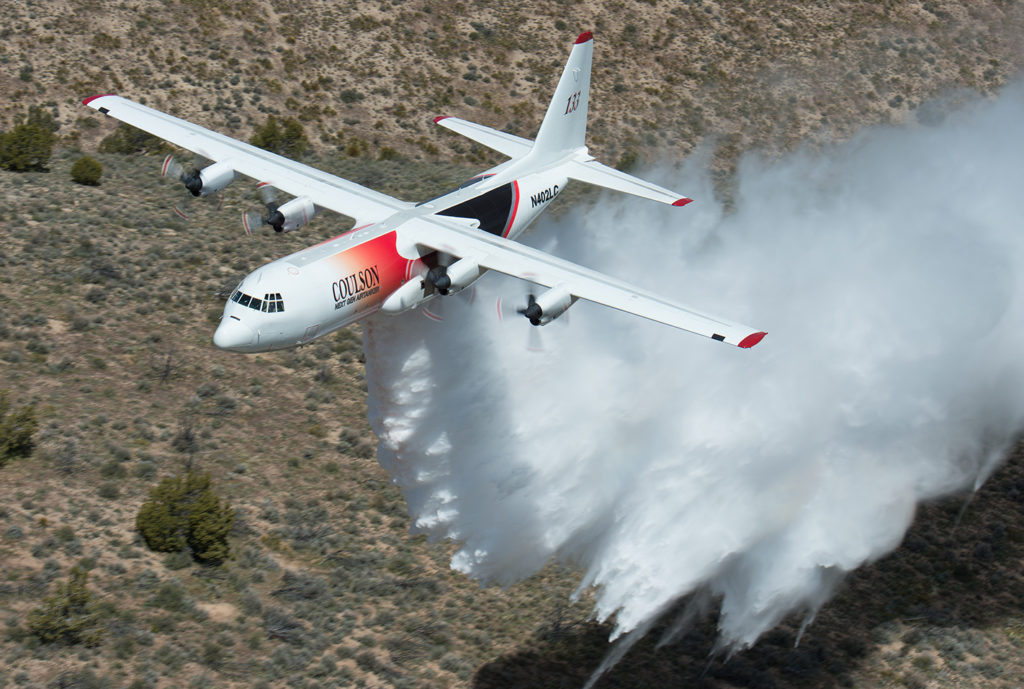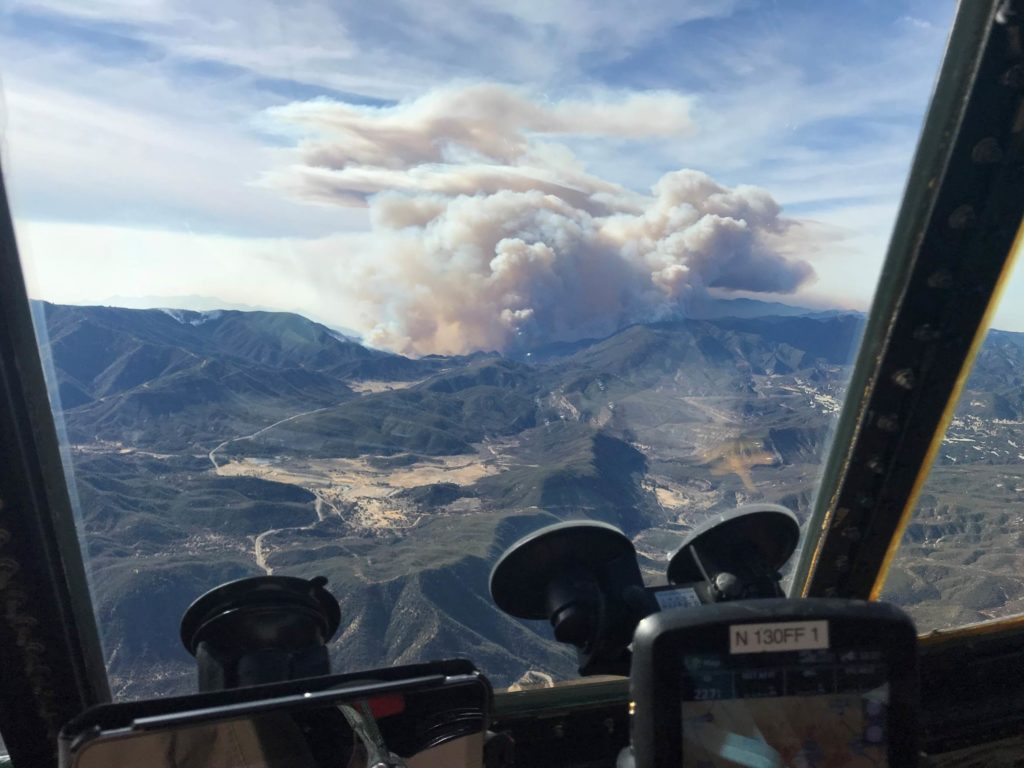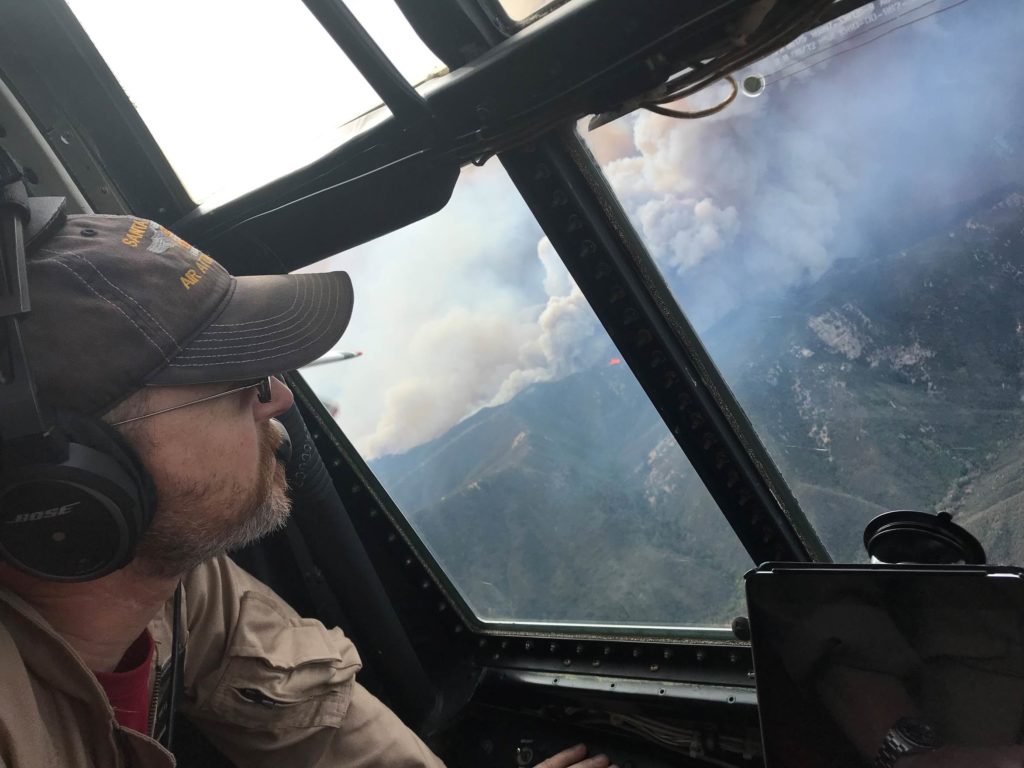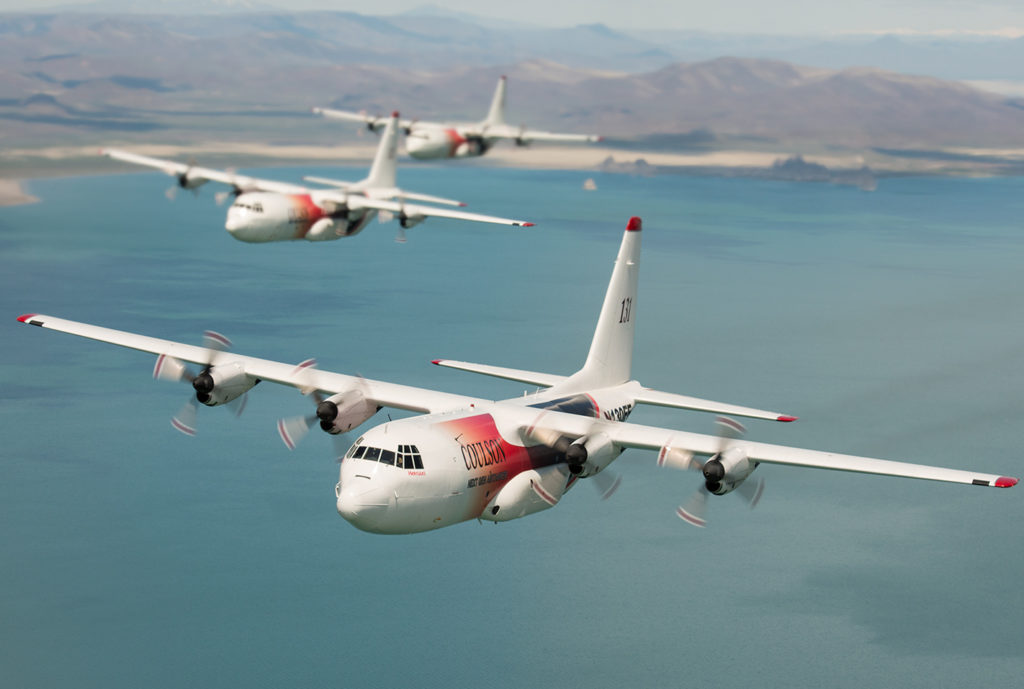Estimated reading time 11 minutes, 13 seconds.
In California, the 2017 wildfire season will long be remembered as the most devastating on record.

Heavy precipitation early in the year produced tremendous vegetation growth throughout the state. During late summer and fall, periods of back-to-back Santa Ana wind events with strong, dry northeast winds and low humidity, dried out vegetation and created dangerous fire conditions.
All told, the year saw nearly 9,000 fires ignite throughout California, consuming over 4,000 square kilometres (more than one million acres), destroying an estimated 10,000 structures and responsible for nearly 50 deaths.
Of these fires, five would ultimately be ranked in the top 20 of the most destructive wild-land/urban-interface fires in the state’s history. But the last significant fire start of the year, the Thomas Fire, would also earn the distinction as the state’s largest ever.
The Thomas Fire began in the early evening on Dec. 4 in a rural/agricultural setting near the small town of Santa Paula, about 70 kilometres northwest of downtown Los Angeles.
Fueled by exceedingly dry vegetation and pushed by strong Santa Ana winds gusting to 110 kilometres per hour (70 miles per hour), the flames rapidly spread southwest across the terrain, seeming to explode as they skipped across ridge lines.

In just a few hours, the fast-moving flames had raced 16 kilometres (10 miles) across hilly terrain and were now threatening the coastal town of Ventura. Throughout the evening, state and local fire agencies mounted an intense battle against the onslaught in and around Ventura.
In spite of the efforts of 1,000 firefighters on the ground, the fire blew up overnight to more than 220 square kilometres (more than 80 square miles), with zero containment.
Anticipating the battles to be mounted at daybreak, Cal Fire made an urgent nationwide request for all available air assets.
Most North American commercial aerial firefighting operators had assumed their season was about over. Many had aircraft already into phase maintenance, had begun modifying aircraft for other missions, or were perhaps moving aircraft to the southern hemisphere for the start of the “down-under” fire season.
Coulson Aviation was one operator in just such a transition. Based in Port Alberni, B.C., the company operates a mixed fleet of multi-use Sikorsky S-61 helicopters and fixed-wing aircraft including three Lockheed C-130 Hercules air tankers. (The company’s fourth C-130 is finishing heavy maintenance and is scheduled to enter operation in February).
Britt Coulson, vice-president of Coulson Aircrane, explained how his operation had to rapidly shift gears upon receiving the call from Cal Fire.

“We were getting ready to dispatch to Australia,” he said. “We had the airplane all loaded up and ready to go. And the day before we were leaving, the fires broke out. Cal Fire phoned us and asked how many Hercs we had and if they could have all of them.”
Prior to the call, one of the aircraft was scheduled to head to Australia to start its contract in Victoria State. Fortunately, another C-130 was already working in Australia, finishing up its contract in New South Wales before coming back to North America.
When the Thomas Fire broke, however, Coulson’s Australian customer agreed to allow Coulson to temporarily keep one aircraft for California and extend the second C-130’s contract to maintain coverage in Australia.
A third aircraft was also down after having its firefighting tank removed to be reconfigured for freight hauling. Again, Coulson shifted gears, reinstalling the tank in just a couple of hours.
In the days and weeks that followed, with the aid of assets from throughout the United States and Canada, an intense air and ground campaign was mounted to gain of control of the fire.
As firefighters drew containment on the southern and southeastern flank, a wind shift steered the fire north along the coast toward Santa Barbara and up into the steep coastal mountains. At times, fire officials estimated a burn rate of about 4,000 square metres (one acre) per second.

Bryan Baker is Coulson’s lead training captain and piloted one of the aircraft on the Thomas Fire. Prior to joining Coulson last year he spent 12 years flying, Lockheed P2Vs and BAe-146 firefighting air tankers.
“Working fires in Santa Ana conditions are like the Super Bowl,” said Baker. “It’s the culmination of everything we’ve had during the normal fire season, but now it’s all combined; the congested airspace, the high winds, the intensity … it was surreal! It really was the perfect storm and rivals anything I’ve ever seen in August.”
He estimates at the peak of the Thomas Fire there were 20 air tankers and 20 helicopters working at any one time.
So how do the C-130s perform as a firefighting platform?
“I’m firmly convinced there’s nothing that will ever beat a C-130,” said Baker. “The [Grumman] S-2 is probably the most manoeuvrable tanker in the business and at no point during this fire season was there ever any place the S-2 could go that we could not get a C-130.”
“I’ve never flown the P-3 and everybody raves about it,” he added. “But we’re carrying 1,000 more gallons than the P-3 and our tank has more head pressure than the P-3. And with the computer controlled aspect and the modernization of the RADS XXL [retardant aerial delivery system], ours is a much more efficient tank.”
“The most difficult thing we do is dropping in a crosswind, especially in Santa Ana conditions,” said Baker. “It plays havoc with the drop and it breaks it all apart. We are the only air tanker in the industry that has the ability to drop a coverage level 10 or 12 in a crosswind and that’s due to the efficiency of the tank. So we have the ability to drop the higher coverage levels and the ability to fly slow, as slow as 120 knots.”

During their assignment to the Thomas Fire, Coulson’s two C-130s flew a combined 60 hours and delivered over 1.2 million litres (320,000 gallons) of retardant. During the overall 160-day fire season, Coulson’s three C-130s maintained better than 99.8 per cent availability, (just 2.5 hours unavailable for dispatch).
“The C-130 is an amazing platform,” said Britt Coulson. “It’s widely recognized as the best air tanker in the world. There’s nothing a Herc can’t do. It has a blown wing, giving it instant lift. It’s got instant thrust. It’s got straight wings. It’s got gobs of power. And we can take off from any air tanker base. In the past five years we have never downloaded once at any base for any reason. We’re going out there with our full 4,000 gallon load [36,000-pound payload], and over double the required contract fuel for the USFS [U.S. Forest Service], which is 2.5 hours. Most days we don’t even need to refuel.”
This year, Coulson is excited at the prospect of adding to the company’s aerial firefighting fleet. By early February, the first of its 737-300 ‘Fireliner’ fleet will be introduced, with a second due by summer and a third by the end of the year.
“From a pure firefighting standpoint there’s no airplane in the world as good as a straight-up air tanker as the C-130,” said Britt Coulson. “But the 737 is a nice complement to it because they do different things. They both have the same tank design and pack the same payload.
“And where the 737 can’t get into the valleys and can’t do those very challenging drops the same way the Herc can, it makes up for it because it’s faster and it can move people. We’re the first air tanker in the world that’s certified to move people with the tanks installed, which creates additional value for the customer. We are able to move 69 people, plus flight attendants.
“This way they can move three strike teams plus managers, land, unload passengers and load retardant. So theoretically, within minutes of landing, the tanker and the strike teams can be working together. This concept was driven from our Type 1 Rotary Wing program, where we have been doing the same type of operations since 2001.”
As of Jan. 1, cooler temperatures and higher humidity had helped firefighters bring the Thomas Fire to better than 90 per cent containment, with only a few isolated smoldering “hot spots.” No forward progress of the fire is anticipated. One of the Coulson C-130s was released, but one is being retained by Cal Fire for a period and is based in southern California.
To date, the Thomas Fire has consumed more than 1,100 square kilometres (more than 280,000 acres), and destroyed more than 1,060 structures. The fire is responsible for two deaths, including a Cal Fire engineer, and has also damaged commercial and medical buildings in downtown Ventura.









Good Read!
I was born and raised in Port Alberni and i am proud of the Coulson group of companies. It’s great to know that i am from the same Valley